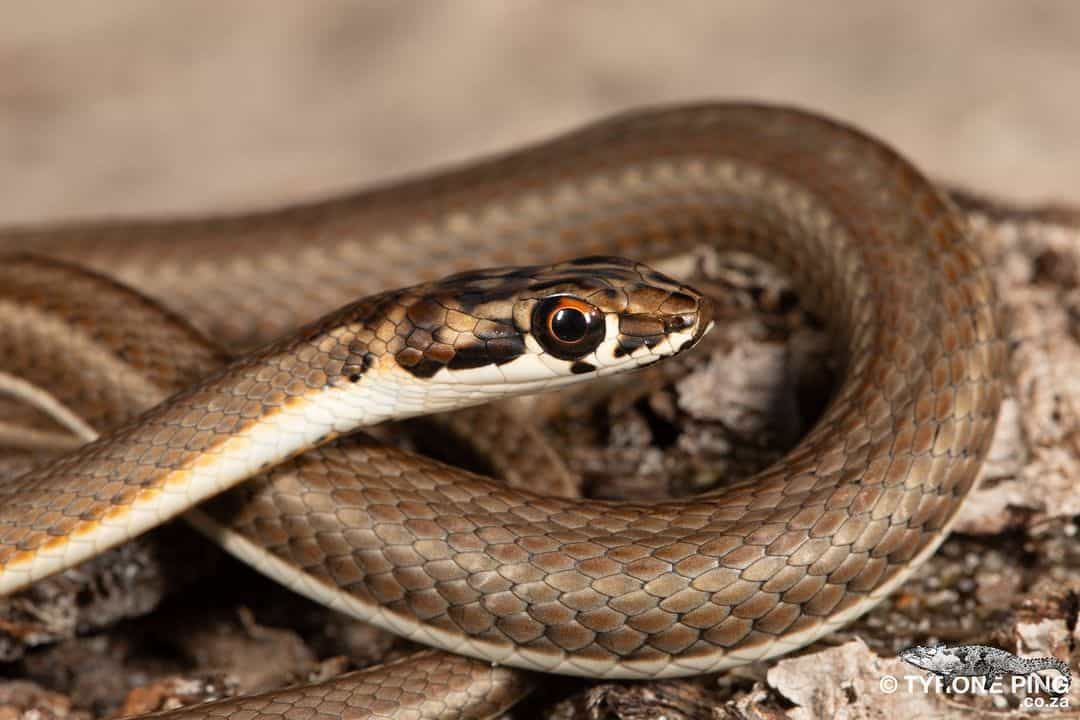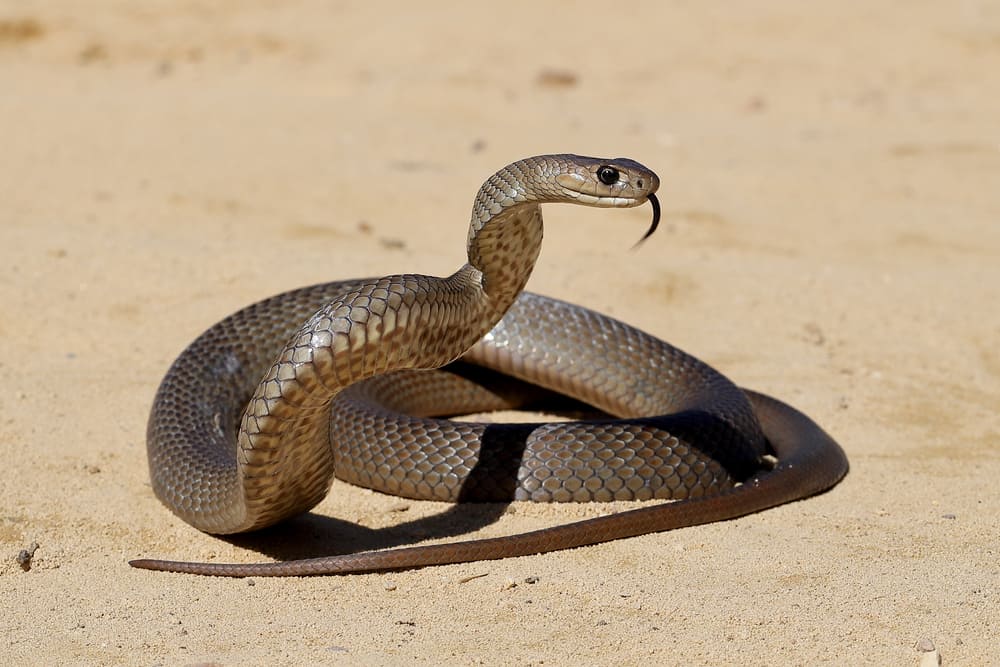If you have ever met a snake before, chances are you’re familiar with their adrenaline-spiking hissing sound.
But did you know snakes can make a variety of sounds?
Yes, snakes have no vocal codes like humans. But they have evolved to produce several sounds and noises that play a vital role in their survival.
In this post, we will dive into the captivating world of snake sounds and noises, uncovering their purpose and significance.
So, join us on this wild, exciting journey!
Types of Snakes That Produce Sounds and Noises

Credit: reptilesofsouthafrica
What comes to your mind when you think of snake sounds? Venomous (poisonous) snakes, right?
It’s true that venomous snake species, like cobras and rattlesnakes, produce a range of sounds as a defense measure.
However, non-venomous species like bull snakes can also create different sounds and noises.
But why do they produce these sounds? Well, continue to the next section for the answer.
Purpose of the Snake’s Sounds and Noises
Snake vocalizations are not just random wild noises; they have a purpose, including:
- Communication: Perhaps the primary reason snakes produce distinct sounds and noises is for communication. But here’s something interesting: Snakes don’t use their unique auditory cues for communicating with other snakes. These sounds are meant for potential snake predators. As a fact, the frequency of snake sounds like hissing is too high for other snakes to hear. That means, a snake cannot hear another snaking hissing.
- Defense Mechanism: Snake sounds can also act as a defense mechanism. By hissing or producing growls or spine-tingling rattles, the snake can warn predators to stay away.
- To Show Aggression: The “sssssss” snake sound could also show aggression, especially in ball pythons. If provoked, snakes might hiss and flicker their tongue quickly to defend themselves.
- Territorial Display: Snake sounds can also help them define their territory. A snake might hiss at humans and animals who encroach on their space to ward them off. The sound act as a deterrent, effectively telling intruders to back off.
Types of Noises and Sounds Snakes Make
1. Hissing
A snake’s hiss is unmistakable and super terrifying. Like a dog’s growl, the hiss warns invaders, prey, and predators.
However, wild snakes usually hiss more than snakes in cages. The reason is that the former is exposed to dangers more frequently than the latter. So, they often react to danger or uncertain situations by hissing?
How Does a Snake Produce the Hissing Sound?
Have you ever tried hissing before?
It’s easy! Place your tongue behind your teeth and force air between the opening.
However, that’s not how hissing works in snakes.
These creatures can’t make a lot of different shapes with their mother. As a result, they can produce a lot of different noises.
But they have a secret weapon: the glottis. This is a little hole right underneath the snake’s tongue that connects to the windpipe.
The glottis allows the animal to breathe when swallowing its meal. It also helps the snake produce the sound of a hiss, thanks to a small piece of cartilage inside it.
When a snake exhales through the glottis, the cartilage vibrates, creating a hissing sound. It also gives the hissing extra volume.
Even interesting:
Some snake species like the bullsnake can change their hiss to mimic a rattle. Because the snake is non-venomous, the rattling noise helps them intimidate predators.
While hissing, snakes also poke out their tongues to smell the predator and take the safest route to escape.
When Do Pet Snakes Hiss?
- When Startled: If you catch a pet snake off guard, it might hiss out of fear. It’s normal for baby snakes to hiss more because they are still getting used to the environment and human owners. To prevent this, first touch the snake softly to alert it you are about to pick it up.
- When Annoyed: Sometimes, snakes want to enjoy their peace undisturbed. If you try to pick one up, it might hiss back at you to express displeasure. So, leave it alone until it’s in a merry mood.
- When Digesting Food: Experts recommend allowing the snake to relax after ingesting a large meal. This can take 3 to 5 days, depending on the snake’s size and amount of food. If you lift the snake after the meal, it will probably hiss to express dissatisfaction.
- When It’s About to Shade: Snakes shed their skin about four times annually. So, leave it alone during this time to avoid upsetting it. If you attempt to touch or pick it up during the shedding process, it may feel nervous and hiss to express itself.
2. Rattling
You can identify rattlesnakes by their distinctive rattle sound, particularly the Western Diamondback Rattlesnake.
But did you know rattlesnakes are not the only snakes that shake their tails?
We have other dangerous snakes, including:
- Cottonmouths
- Copperheads
- Terciopelos
- Cantills
- Bushmasters (These snakes even have spine-like scales at the tip of their tails for a louder sound)
Here’s a list of non-venomous snake species that also shake their tails:
- Corn snakes
- Gopher snakes
- Rat snakes
- Kingsnakes
These snakes produce rattling sounds by shaking their tails, which consist of interlocking segments made from keratin. Yes! The stuff that makes up your finger and toenails.
These interlocking segments are loosely attached. As a result, they move back and forth when the snake shakes its tail, producing a rattle.
As the snake grows and sheds its skin, a new segment forms and is added to the rattle, causing it to lengthen over time. But a long rattle doesn’t necessarily mean a loud sound. That would be the speed and intensity of the tail vibration.
For venomous snakes, the tail shaking serves as a warning to predators. It also serves as a diversion, directing the attacker’s attention to the tail. This can lead to confusion and prevent an attack.
As for non-poisonous snakes, tail vibrations help them mimic dangerous snake species and shield themselves from predators. This is what is called Batesian mimicry.
3. Bellowing
The bull, gopher, and pine snake can produce bellows when threatened or attacked by a predator. Unlike hisses, bellows are distinctively loud and can leave you frozen in your tracks.
These snakes bellow by forcing air via the larynx. Within the larynx is the laryngeal septum (vocal coder), which vibrates to produce the spine-chilling bellowing sound.
Usually, this sound has a short period of high amplitude (loud noise) followed by a long period of low amplitude (quieter noise).
4. Growling
You would think a bellow is the most unique snake vocalization. But wait till you learn that some species have evolved to growl when agitated. One such snake is the king of cobra.
The king cobra is considered one of the largest venomous snake species in the world. While it might look intimidating, it’s usually timid unless it feels threatened.
When a king cobra spots a threat, it might slither to safer areas. It might also inflate its hood, which comprises several air sacs to look bigger and intimidate the attacker.
Additionally, it may produce a scary growl that sounds like it belongs to a lion or dog instead of a snake.
Additional Snakes Sounds and Noises
Besides the vocalizations mentioned above, here are some creepy snake sounds worth checking out:
- Puffing: It is no surprise to hear your pet snake puff and huff at night or when feeding. This rings true for snake species, like boas and carpet pythons. The puffs and huffs could also show the snake’s frustration.
- Shrieking: Snakes that bellow like the pine snake can also produce a shriek in response to danger. All thanks to its distinctive vocal cord.
- Whistling: Some snakes like Russel vipers and corn snakes whistle.
- Rasping: Some snakes produce rasping sounds by rubbing their scale together. For example, saw-scaled vipers (native to Africa and Asia), will assume an “S” shape and rub their scale together to make a noise similar to a hiss. The purpose of the sound is to scare away predators.
What To Do During a Snake Encounter

Snakes are typically timid and avoid human contact and confrontation whenever possible. So, if you encounter one on your property, it is more likely the snake is scared of you than you are of it.
Below, we’ve provided you with the best ways to deal with a hissing snake and ensure the safety of both parties.
- Stay Calm: Panicking only increases the likelihood of sudden movements. This can disturb or frighten the slithering creature. As a defense response, the snake might hiss or even attack you.
- Note the Sound: Snake species make sounds, such as hissing, rattling, or growling. Identify the type of sound and, if possible, try to identify the snake and the threat level. This information might guide your next actions.
- Allow the Snake Some Space: Snakes frequently make sounds as a defensive mechanism, signaling a threat. Respect the snake’s personal space and avoid approaching or handling it. Maintain a safe distance to prevent snake bites and lower the risk of escalating aggression.
- Back Away: If you encounter a snake and it makes noises, it’s best to back away from the scene. Also, maintain eye contact with the snake, as it will be aware of your movements. Create distance by retreating slowly and smoothly while avoiding sudden or threatening gestures.
- Seek Professional Help: In certain situations, it’s wise to call your local animal control or professional snake removal service. These experts possess the skills and equipment to handle and relocate the snake, safely.
Closing Thoughts
Snakes have a fearsome reputation. But surprisingly, these creatures are typically shy and often avoid human interactions. They naturally keep their distance when they sense human or predator presence.
However, when threatened or cornered, they can produce a lot of different sounds to warn, intimidate or divert the attention of invaders or predators.
Most individuals are familiar with the snake’s hiss. But these animals can also growl, buzz, rattle, shriek, whistle, and rasp. This shows the remarkable diversity of snake vocalizations.
Overall, learning about snake sounds and noises helps you better appreciate their communication methods. This way, you can prevent dangerous encounters, especially with venomous species.
Thank you for stopping by! If you have any questions, inform us in the comment section.
